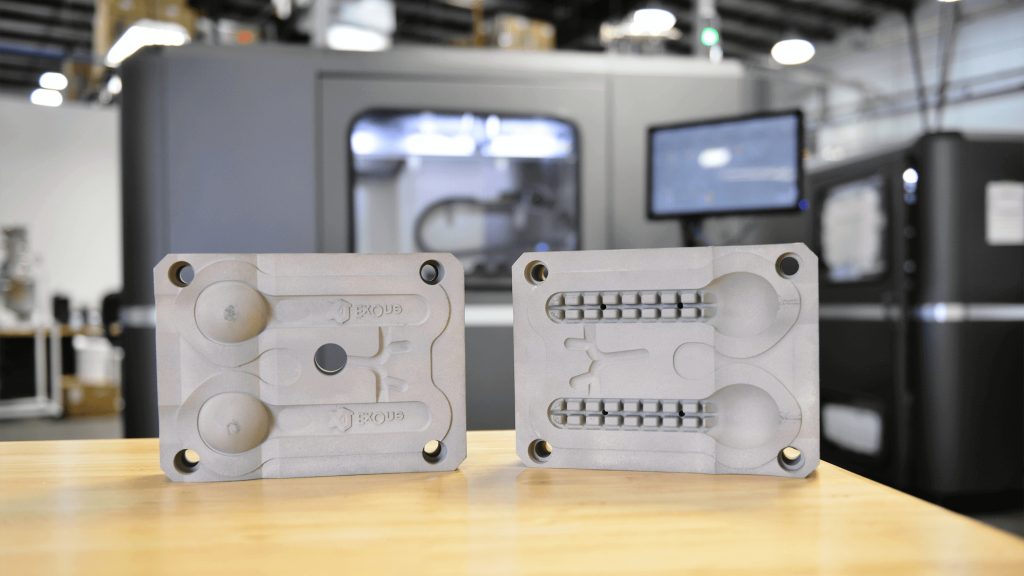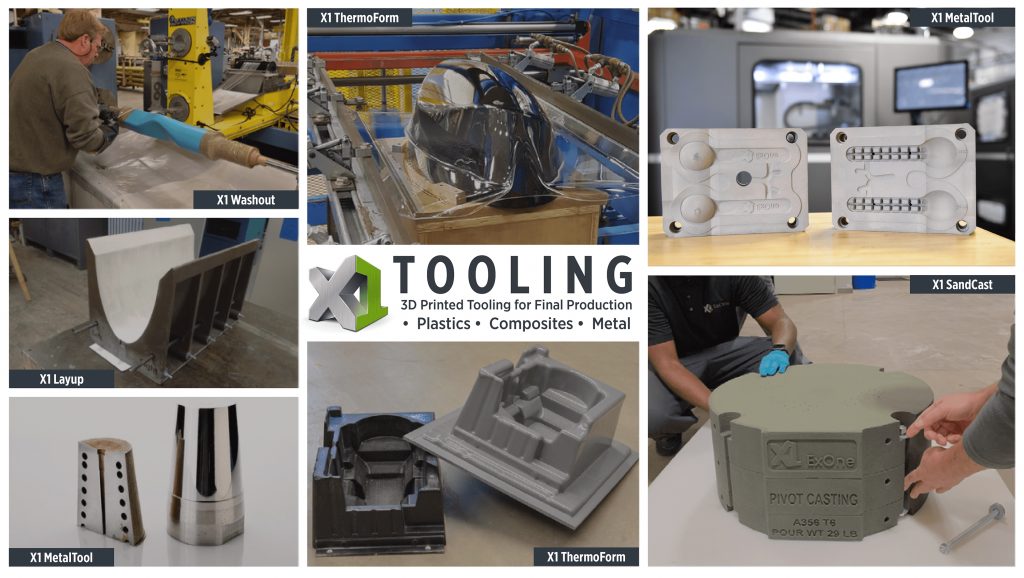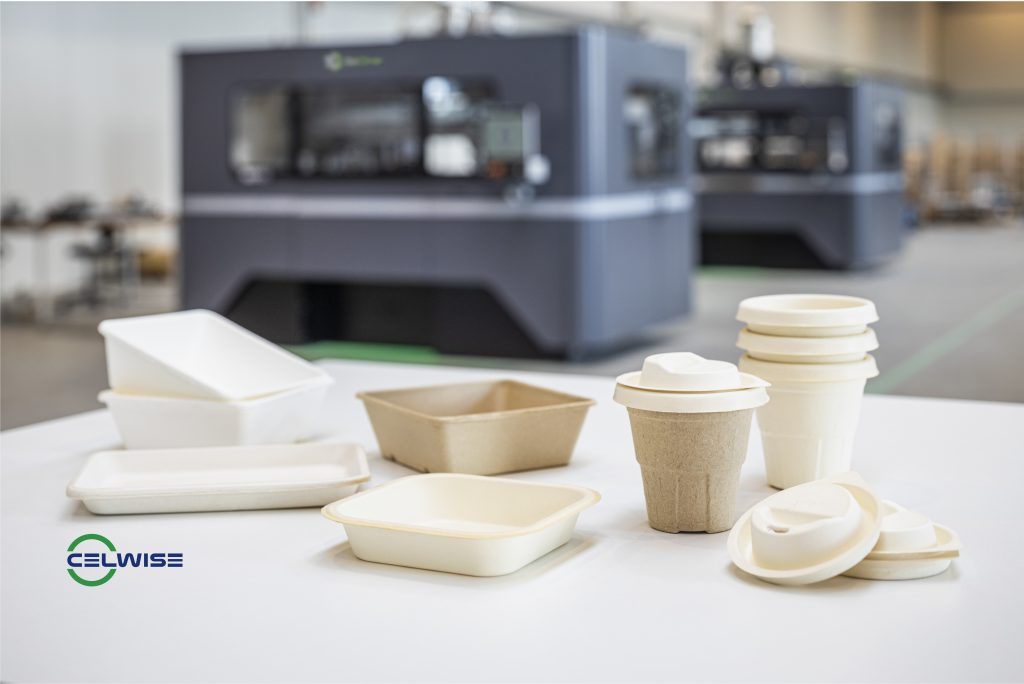Following the acquisition of Freshmade 3D’s patented 3D printed tooling technology earlier this year, binder jet 3D printer OEM ExOne has now launched its own portfolio of 3D printed tooling products.
Aimed at manufacturers, the new X1 Tooling range is reportedly the world’s largest offering of industrial-grade 3D printed tooling. The product line includes tooling for plastic injection molding, forming, composite layups, metal castings, and more.
John Hartner, CEO of ExOne, said, “Today’s launch of the X1 Tooling portfolio is the direct result of strong customer demand for tooling options that speed up delivery times and bring tooling closer to the point of final production, wherever that is for them.”
Customers can purchase the new binder jet 3D printed X1 Tooling products directly from one of ExOne’s Adoption Centers.

Polymers, composites, and metals
For polymer production applications, the X1 Tooling range contains X1 MetalTool and X1 ThermoForm. The former is available in 420i steel-bronze, 316L stainless steel, M2 tool steel and more, and is designed to replace steel or aluminum tooling for plastic injection molding and blow molding applications. On the other hand, X1 ThermoForm is a 3D printed sand form that’s infiltrated with a reinforcing resin. It can be used for a range of thermoforming applications such as vacuum forming, compression molds, and foam molding.
When it comes to composite production, customers can make use of X1 Layup and X1 Washout. X1 Layup is a custom 3D printed sand form specially designed for high-precision, high-temperature composite layup applications. It offers dimensional tolerances of +/- 0.025” and the 3D printed tooling can also be CNC machined to +/- 0.005” if needed. X1 Washout is a sand form made of a water-soluble binder. Intended for ducting, mandrels, and other trapped shapes, the sacrificial form can be washed out with water after traditional composite layups and autoclaving.
X1 Tooling also contains products for metal part production. X1 SandCast can be 3D printed in a range of sand types and binders, and is designed primarily for custom aluminum castings. X1 DieMold is still in development but can be 3D printed in H13 tool steel for high-strength and durable die molds. It’s worth noting that X1 MetalTool (for polymer production) can also be used to 3D print metal end-of-arm tools, as well as consumable cutting tools.
Hartner adds, “As the COVID pandemic has continued disrupting supply chains, we’ve had more and more manufacturers ask us: ‘Can you 3D print tooling?’ Today, we’d like the market to know that the answer is yes — we can help de-risk your supply chains and make them more sustainable, with less shipping and other forms of waste. Our new tooling portfolio is a grand slam of fast and affordable new tooling options for manufacturers.”

Celwise AB and X1 MetalTool 316L
A number of ExOne’s customers have already begun using the company’s 3D printed tooling products, including Sweden-based eco-friendly packaging firm Celwise AB. Specifically, Celwise is using 316L stainless steel X1 MetalTool 3D printed by ExOne to transform wood-based materials into water-resistant molded fiber products. The company’s cups and food containers are designed to replace single-use plastics and look and feel just like the real thing.
“Our planet needs this technology now,” said David Pierce, Inventor and Co-owner of Celwise. “Our patented technology delivers a recyclable, renewable, and biodegradable product that can be manufactured faster and more affordably than traditional technologies. Advanced manufacturing approaches, which rely on 3D printed tooling from ExOne, are an important part of our process.”

Earlier this year, Italian luxury jewelry supplier Promotion SpA adopted INTAMSYS 3D printing technology to develop its own set of custom jewelry tooling. The company was able to create robust new bracelet alignment tools capable of withstanding multiple testing cycles, all without scratching the products’ fine exteriors.
Elsewhere, Forward AM, the 3D printing arm of chemical company BASF, has previously launched its own Ultrafuse 17-4 PH metal filament specifically for 3D printed tooling applications. The 17-4 stainless steel-based material comprises metal powder in a polymer matrix, and is designed to enable safe and cost-efficient metal printing on most common FFF systems.
Subscribe to the 3D Printing Industry newsletter for the latest news in additive manufacturing. You can also stay connected by following us on Twitter, liking us on Facebook, and tuning into the 3D Printing Industry YouTube Channel.
Looking for a career in additive manufacturing? Visit 3D Printing Jobs for a selection of roles in the industry.
Featured image shows X1 MetalTool used for a 3D printed plastic injection molding application. Photo via ExOne.



